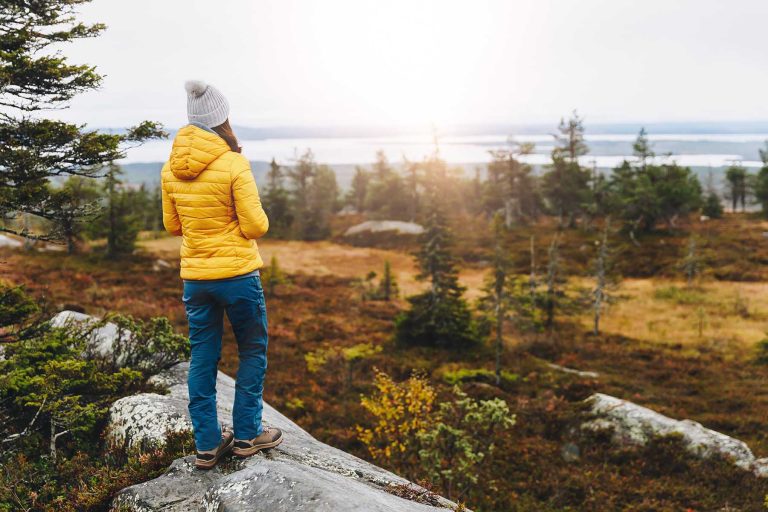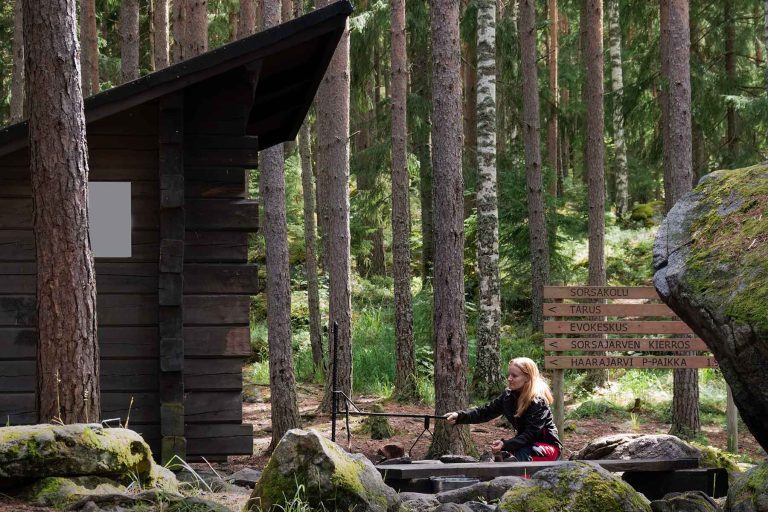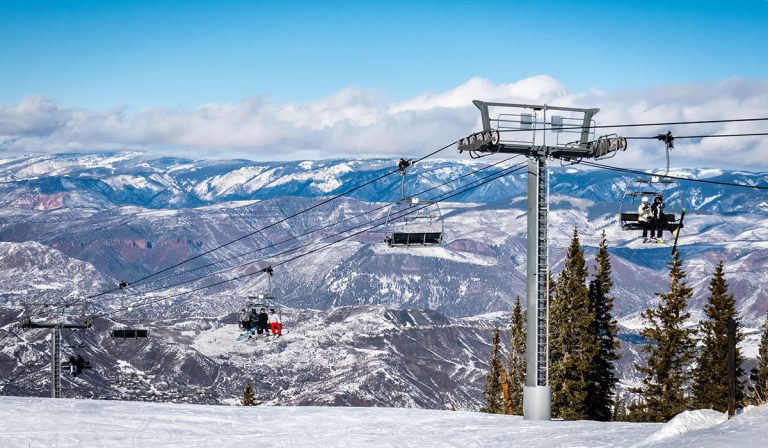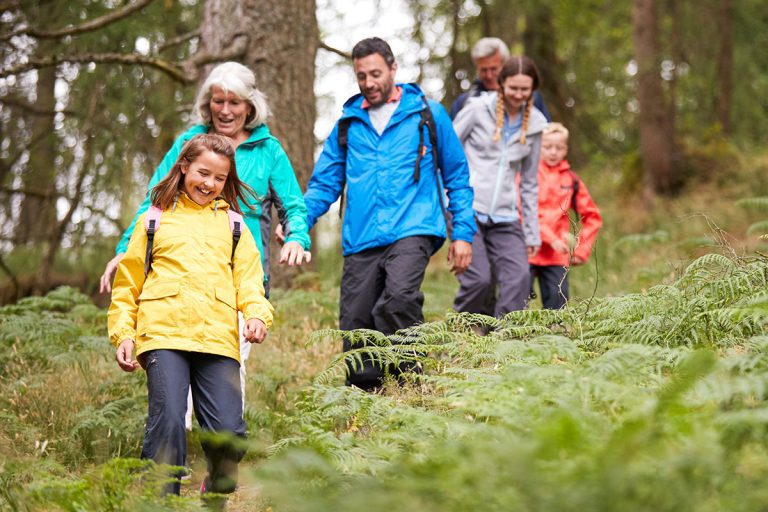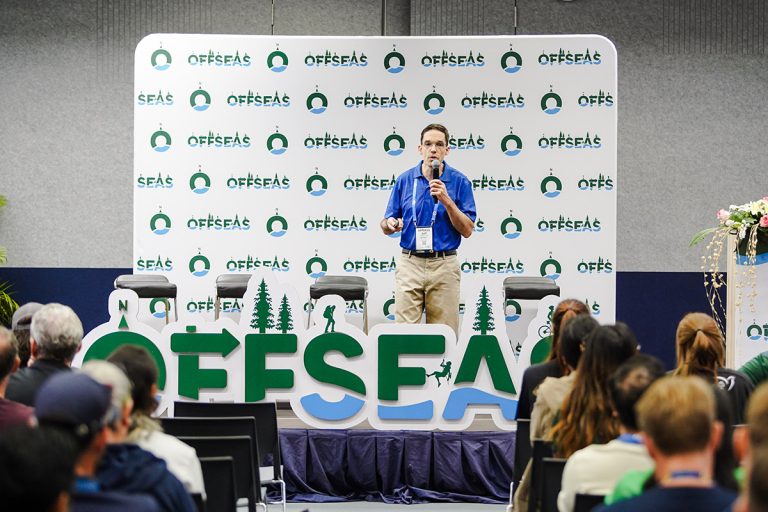Editor’s note: This article by Viristar’s Director, Jeff Baierlein, was originally published in February 2003 in the now-discontinued periodical The Outdoor Network. Read an update on the successor to SETLA, and other outdoor regulations, here.
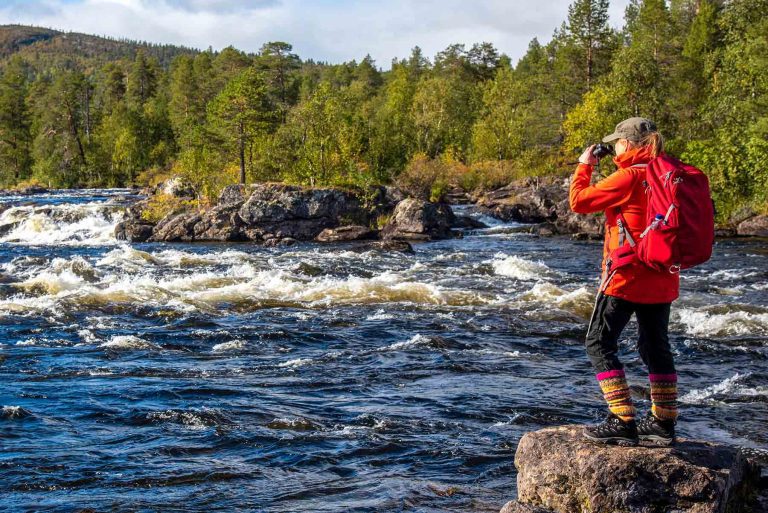
Finland is a land of sparkling lakes, snowy forested hills, and vast tracts of wild tundra. Finns love to backpack through their dense boreal forests, expedition by canoe across pristine lakes, and trek over miles of arctic wilderness. Family expeditions as well as professionally led outdoor trips are abundant. Finns are true outdoor enthusiasts. Yet they also make up one of the most organized and technologically advanced countries of the world. It’s natural, then, that Finland is setting the pace in organizing a national outdoor risk management program.
Outdoor program risk management is nothing new. Alan Hale developed a dynamics of accidents model in the early 1980’s, which set a conceptual framework for understanding how accidents happen. Hale’s theory involved distinguishing between objective and subjective hazards. A fatal accident on a National Outdoor Leadership School program spurred the creation of what became the Wilderness Risk Managers Committee. The WRMC held its first conference in 1994 in Washington State. Many others have contributed to the field, and outdoor risk management needs continuous improvement to stay relevant. Finnish outdoor experts have taken today’s best practices and created a new approach to outdoor risk management—SETLA.
What is SETLA?
SETLA— Seikkailu-Ja Elämystoimialan Turvallisuuden Laatu-ohjelma, or Adventure and Outdoor Programs Quality of Safety Program — is organized by Outward Bound Finland with major support from the Finnish Ministry of Education. It has pulled together resources from throughout the country to implement a coordinated safety review and accreditation process. SETLA also develops organizational risk management plans and teaches firms how to develop their own risk management systems. What makes SETLA unique is the story of its creation, the consensus reached to develop its practices, and the national scope of its operations.
A Touch of History
Outward Bound Finland (OBF) started just over a decade ago to provide life-enriching outdoor experiences for Finns. The organization receives operating support from the Finnish Ministry of Education.
Youth activity organizations are common in Finland; many cities have their own city-run youth agencies. The Ministry wanted to make sure these programs were safely run, and was aware of Outward Bound’s extensive safety program, including its Safety and Quality Review. In 1999, the Finnish Minister of Education asked Kimmo Räty, Executive Director of Outward Bound Finland, to develop a comprehensive safety review system applicable to all Finnish youth organizations. The review system would be based off the Outward Bound International Safety and Quality Review. The Ministry provided two years of start-up funds for the project.
The same year, Finland’s Consumer Safety Bureau (similar to America’s Better Business Bureau) was seeking a way to enhance outdoor program safety. The OSHA-like Finnish Labor Safety Program was also interested in the same issue. They joined the Education Ministry in asking OBF to develop a safety review program. Formalized risk management plans are established in much of government and industry, but for outdoor programming in Finland, it was a relatively new idea.
Räty tagged Jyrki Hämäläinen to head up the project. Hämäläinen, a part-time Outward Bound instructor since 1996 and at the time an OBF Board member, was then a risk management trainer with the Finnish safety and outdoor training firm Aavas Oy. Hämäläinen invited representatives from every major Finnish group involved in outdoor programming to help organize the effort. Hämäläinen got contributions from each trade or sport association—nine in all. They represented industries as diverse as climbing, horseback riding, canoeing, parachuting, wilderness guiding, paragliding, and sport instruction. Scotland’s Bob Barton, one of Europe’s top risk management experts, also consulted on SETLA’s development. And so SETLA was born.
The Safety Review
The SETLA safety review is based on Finnish laws and the guidelines of relevant outdoor associations. Guidance also comes from the European Union (EU). The EU, for example, has standards for climbing walls, and plans to develop high ropes course standards over the next few years. Standards and best practices are also borrowed from non-Finnish organizations, such as the Association for Challenge Course Technologies.
Eight Finnish safety experts were invited to the first ten-day train-the-trainer course. The orientation covered how to do a review, teaching such skills such interviewing and reporting. It trained reviewers what to check for and where to look for it, but didn’t teach specific outdoor skills such as knots, climbing and canoeing techniques (trainers were already familiar with this information). After the course, the trainers did a couple of practice reviews, and the review system was refined.
How does the review work? Like many reviews in the US, there are a minimum of two reviewers per team. Depending on the size of the program being reviewed, there may be up to four people, as well as specialists, working between two to four days.
SETLA specialists include a consultant from the police, a contact person with the fire department, and a consulting engineer. The specialists might do a site visit or consult from afar. For example, the engineer might receive emailed pictures of High Ropes courses and be asked to evaluate stresses and loads.
Two reviews have been done at the Finnish outdoor school Hyvärilä, the latest in October of 2002. A program like Hyvärilä calls SETLA staff and requests a review. The lead reviewer speaks with the requesting organization, gets information on the scope of the program, and selects the appropriate team. The lead checks in with the organization to ensure the review team meets the organization’s needs. The review is done, and findings are written.
There are three levels of findings in a SETLA review. The first level consists of findings of an immediate safety risk. For these findings, the activity must stop at once. For example, a ropes course may be unsafe and may need to be rebuilt. In the second level of findings, longer-term hazards are identified. If no changes to systems are made, serious accidents may occur in the long term. The third level of findings contains good tips. These are consulting suggestions rather than urgent safety concerns. They might suggest, “Try to do your high ropes course this way,” or “Have you thought of operating your canoeing program that way.”
After the review, the team meets with the head of the reviewed program to discuss the findings. A detailed report is written within two weeks. SETLA sends the final report to the organization, which replies within eight weeks. In the reply, the director of the program being reviewed can agree or disagree with the findings. The reviewee must, however, send a plan to SETLA for how to change policies and procedures based on the recommendations. If the plan looks good—level one issues were changed, and there is a plan to address level two concerns—the program gets the SETLA certification, which is valid for two years. After that time, a new review needs to be done.
SETLA has been operating since September 1, 2000. In the first year of operation, about five reviews were planned. However, demand was high, and 30 were done! The following year, approximately 20 reviews were conducted.
In the fall of 2002, SETLA began providing services to a new client group—schools and institutes. By the end of the fall, SETLA had done three safety reviews for institutes. One, a polytechnic institute (similar to an American vocational/technical college), has an outdoor school component, and two institutes are wilderness guide schools. In addition to receiving reviews, these programs have also requested that SETLA provide risk management courses.
Branching Out: From Reviews to Trainings
Once SETLA had a system figured out for safety reviews, it turned its attention to a new offering: risk management training courses. These programs are one- to two-day risk analysis and management intensives. The content includes philosophy, such as what safety and risk management mean. It goes over how to develop safety plans and how to use medical and other forms. SETLA also covers relevant laws and best practices from different associations.
Who comes to these trainings? Groups from the biggest to the smallest outdoor program attend. Villi Pohjola, the largest Finnish outdoor organization, is slated to attend the training. Part of the Ministry of Forestry, Villi Pohjola organizes hunting, fishing, and other outdoor activities. It contracts with 300 service providers nation-wide to provide instructors and curriculum. In 2003, SETLA plans to give this risk management training to 100 Villi Pohjola contractors. By summer 2003, SETLA aims to formalize its risk management training curriculum, including the production of a package containing a CD with slides and information.
The Third Leg: Consulting
Not satisfied with its growth doing safety reviews and training in risk management, SETLA has developed a third product: consultation services. On request, SETLA will develop a company safety plan. Here SETLA staff might mark GPS coordinates for ambulance access points, for example, or write manuals, and draw maps and plans for emergency response.
In addition, SETLA has helped develop the surprise safety checklists used by the Consumer Safety Bureau on outdoor programs. The organization has also written a similar safety inspection document that insurance companies use in evaluating insured outdoor programs. And SETLA has a business-to-business safety checklist. For example, Nokia may wish to provide an employee fun day such as a company rafting trip. The firm can use SETLA’s checklist to assess various outdoor programs it may wish to use for the trip. SETLA also provides a personal checklist for individuals interested in assessing outdoor programs in which they may wish to participate. SETLA is also considering putting EU laws and best practices for outdoor programs on the World Wide Web.
Threats and Growth Opportunities
To date, two review training courses have been conducted, and there are 18 reviewers who are qualified to do a SETLA review. These reviewers are part-time contract employees of SETLA; they work full time for the Consumer Safety Bureau, Canoe Association, or other groups. Some of the reviewers (for example, from the fire department and Consumer Safety Bureau) come free to SETLA because their host agencies pay for them. SETLA has five staff on the organizational risk management plan consulting team. As SETLA’s demand grows, so too will these numbers.
Does SETLA face significant competition? Essentially, no. In fact, SETLA enjoys unprecedented esteem in the Finnish community. During the second safety review for Hyvärilä in the fall of 2002, the lead consumer safety inspector for Finland participated to watch and learn from SETLA. SETLA enjoys good cooperation with outdoor industry associations and government agencies. The Bureau of Tourism, under the Ministry of Trade, has attended a risk management training course. It has also financially supported companies (to the extent of about 50 percent of the cost) to have safety reviews held. SETLA naturally promotes the image and visibility of the government bureaus with which it works, so the arrangement is mutually beneficial.
Outward Bound International supports the SETLA idea, as do senior experts such as Scotland’s Bob Barton and Belgium’s Johan Hovelynck in the European outdoor risk management community. Reviews and courses are relatively inexpensive, and are offered not in the context of market competition or to make money, but as a service of a non-profit organization. SETLA’s not-for-profit position, in fact, has been key to its success. Similar services operated by a company such as Aavas Oy might be seen as a kind of marketing for their rock climbing or other trainings, and could be considered a conflict of interest. In order to avoid the appearance of such conflicts, SETLA has Memoranda of Understanding with its partner industry associations. For example, the Finnish climbing association agrees that during its participation in safety reviews, it won’t train on how to build climbing anchors, but limits its scope to general guidance on gear inspection timelines and the like. SETLA has faced surprisingly few obstacles in its development.
In one year, SETLA reviewed Finnish outdoor programs that in total run 280,000 client days. Most of the reviewees are large organizations such as college-like institutes and holiday centers. These are the organizations with the resources to request and the administration to support reviews.
Is SETLA unique?
How is SETLA different from North American risk management systems? A mixture of organizations and standards make up the American risk management scene. A hodgepodge of trade associations, consultants, insurance companies, state and federal governmental agencies, and content providers all provide information about best practices and accreditations. Together, they ensure generally high standards for safety across the US. Nowhere in the US, however, are best practices and standards for safety reviews, training and consultation brought together under one tent and then thoroughly and systematically disseminated to the outdoor industry, under government support and supervision. In Finland, SETLA has brought all of these services under one umbrella. To American eyes, at least, this single source for information and standards, supported by government dollars, is unique.
What’s Next?
SETLA is growing and changing. Hämäläinen envisions a future where SETLA won’t be an office, but a true national or international network. In late spring of 2003, a meeting in Helsinki will bring together different organizations and associations at a Round Table to exchange knowledge and develop operating partnerships. Hämäläinen sees that in the future, SETLA will be a central resource for risk management for the whole of Finland. Hämäläinen also predicts that SETLA’s primary activity in the future will be conducting risk management training courses, rather than running reviews.
The client group for SETLA is shifting, too. The idea first was only to focus on youth work. However, adult and youth outdoor tourism—not education—quickly became the biggest market.
Interest in SETLA’s program extends beyond Finland. Belgium’s leading outdoor risk management expert plans a trip to Finland in the spring of 2003 for ten days. The goal is to gain information to start a similar system in Belgium. SETLA has gotten requests from England to have its material in English, and French students have expressed interest as well. The system may become EU-wide, or even broader, although each country would tailor it to its own unique laws and best practices, as well as EU minimum standards. SETLA has no plans for North America, however, where many of the ideas behind SETLA’s program originated.
Why It All Matters
Finland enjoys a socialized medical system, governmental support for education, and a strong central government that coordinates many aspects of Finnish life. As a country with socialist tendencies, it’s well-equipped to support a national-level cooperative system for outdoor risk management.
Could this level of coordination be pulled off in North America? Americans are an independent lot. Relative to many South American, European and Asian cultures, America is oriented towards the free market, capitalism, and the independent entrepreneurial spirit, so a government-sponsored program might not be warmly welcomed. It is intriguing, however, to contemplate a national-level, voluntary system of outdoor program risk management. An even greater change would come about were the USA to adopt a mandatory accreditation system such as Britain’s Adventure Activities Licensing Authority (sidebar). What would it be like if the collective wisdom of the Wilderness Risk Managers Committee were merged with the national accreditation activities of the Association for Experiential Education? What would be gained; what would be lost? Is there a niche for a completely new organization or network? It’s a fine discussion to be had over one’s favorite beverage. There may be a lesson to be learned from Finland and SETLA.
Sidebar 1:
Similar organization in Great Britain
England recently established a program similar to SETLA’s safety accreditation system. This began when four teenagers attending an outdoor program drowned in a 1993 canoeing mishap. Following this, the British government, outdoor programs, concerned parents and the media began a national conversation around safety reviews and accreditation. After much debate, the Activity Centres (Young Persons Safety) Act of 1995 was passed. The Act replaced a voluntary system of safety reviews with a mandatory, government-led program of inspection and approval. Any outdoor program for youth who are 17 or younger now must be inspected, approved, and licensed by the Adventure Activities Licensing Authority (AALA). Unlike with SETLA, compliance with AALA is mandatory.
Prior to the mandatory inspection regime, adventure activity providers could choose to follow voluntary codes of practice with umbrella groups such as the Royal Yachting Association or the British Canoe Union. The British Government and many outdoor programs initially supported the voluntary inspection scheme. Following the drowning tragedy, however, lobbying by interest groups and further investigation from voluntary inspection associations led to support and eventual passage of the new legislation. The mandate for government inspections, it was hoped, would ensure a consistent level of safety across the country. The inspections apply to most commercial organizations running backcountry climbing, canoeing, caving and selected other activities.
The mandatory licensing program has come under fire, however. According to Hämäläinen, accident rates in English outdoor programs went down as the law went into effect in 1996, but the rate is now rising. Hämäläinen attributes this to the fact that AALA is a one-time-only review, and, due to the external nature of the inspection, organizations may have lost some ownership of their own safety, letting the government handle that concern.
Sidebar 2:
More resources on the web
Here is where to locate more information on organizations and programs mentioned in the article:
- Finland Consumer Safety Bureau (Finnish and English)
- Finnish Labor Safety Program (Finnish and English)
- The UK’s Adventure Activities Licensing Authority (AALA) (English)
